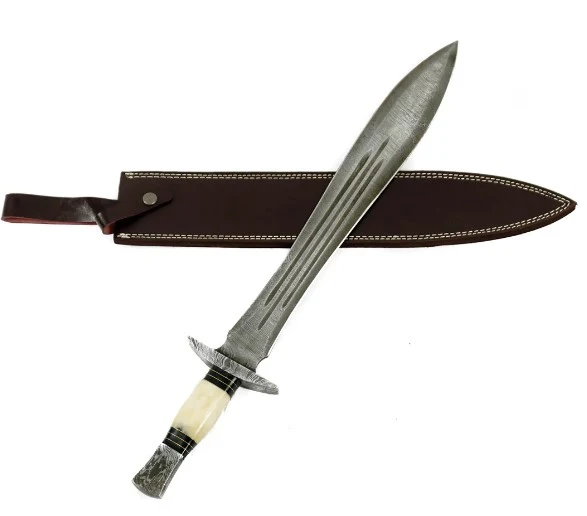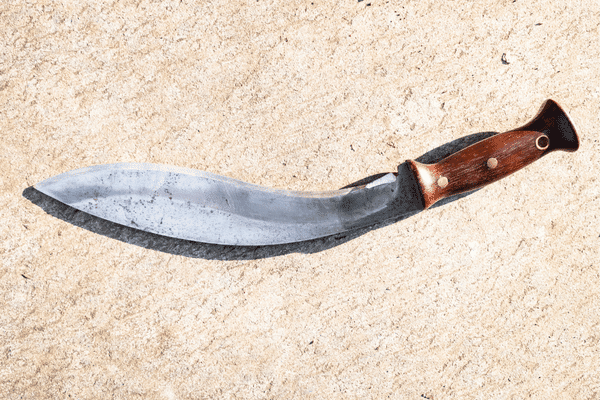Damascus Sword: Unraveling the Mystique of a Legendary Weapon
Welcome to our in-depth exploration of the Damascus sword, a legendary weapon steeped in history and surrounded by an aura of mystery. With its origins tracing back centuries, the Damascus sword has captured the imagination of warriors, historians, and sword enthusiasts alike. In this article, we will delve into the fascinating world of the Damascus sword, examining its history, craftsmanship, unique properties, and enduring legacy. So grab a seat and prepare to embark on a journey through time as we uncover the secrets behind this extraordinary weapon.
The Origins of the Damascus Sword
The Damascus sword owes its name to the city of Damascus, which lies at the crossroads of ancient trade routes in present-day Syria. This magnificent weapon emerged during the medieval period and quickly gained a reputation for its exceptional strength, sharpness, and striking beauty. Craftsmen from Damascus were revered for their skill in forging these swords, utilizing a technique that has been shrouded in mystery for centuries.
The Intricate Art of Forging a Damascus Sword
To create a Damascus sword, blacksmiths combined two different types of steel: a hard, high-carbon steel for the cutting edge and a softer, more flexible steel for the spine. This fusion of steels resulted in a blade with remarkable durability, resilience, and a visually stunning pattern known as "Damascus patterning" or "Damascus steel."
The process of crafting a Damascus sword involved several intricate steps. First, the blacksmiths would heat the steel in a forge until it reached a malleable state. The two types of steel were then meticulously layered, folded, and welded together, creating a blade with numerous layers. This folding process contributed to the distinctive patterns visible on the surface of the blade.
Once the layers were bonded, the blacksmith would shape the blade and carefully grind it to achieve the desired shape and edge. The final step involved etching the blade in an acid solution, which enhanced the contrast between the layers and accentuated the intricate pattern.
The Legendary Properties of Damascus Swords
Damascus swords were renowned for their exceptional quality and performance on the battlefield. The unique composition and forging techniques bestowed several notable properties upon these weapons.
Superior Strength: The layered structure of Damascus swords provided unparalleled strength and resilience, allowing them to withstand the rigors of combat and maintain their sharpness for extended periods.
Exceptional Sharpness: The Damascus sword's cutting edge boasted exceptional sharpness, enabling precise and devastating strikes.
Flexibility: The combination of hard and soft steels granted Damascus swords remarkable flexibility, reducing the risk of breakage during combat.
Distinctive Patterns: One of the most captivating aspects of Damascus swords is the intricate patterns that adorn their blades. These patterns, ranging from flowing waves to bold swirls, are a testament to the blacksmith's skill and craftsmanship.
Legendary Reputation: Damascus swords earned a legendary reputation on the battlefield, with tales of their extraordinary performance and ability to slice through armor and adversaries alike.
Damascus Sword: A Symbol of Prestige and Status
In addition to their formidable combat capabilities, Damascus swords held significant cultural and symbolic value. They were often adorned with lavish decorations, including precious gemstones, ornate hilt designs, and intricate engravings, elevating them from mere weapons to works of art.
The Influence of Damascus Swords in History
Throughout history, Damascus swords have played a prominent role in shaping the destiny of nations and the outcomes of battles. From the Crusades to the conquests of Genghis Khan and the conflicts of the Ottoman Empire, these remarkable weapons have witnessed countless triumphs and tragedies on the battlefield.
The Modern Fascination with Damascus Swords
In the present day, the allure of Damascus swords continues to captivate collectors, enthusiasts, and historians alike. Their scarcity and historical significance make them highly sought-after artifacts, often fetching significant sums at auctions and private sales. Many swordsmiths and artisans also strive to replicate the ancient techniques used in crafting Damascus swords, keeping the tradition alive and inspiring a new generation of craftsmen.
FAQs about Damascus Swords
What is the significance of the term "Damascus" in Damascus swords?
- The term "Damascus" refers to the city of Damascus, which was renowned for its exceptional sword-making craftsmanship during the medieval period. Swords made in this region became widely known as Damascus swords.
Are Damascus swords still being produced today?
- While the original techniques for crafting Damascus swords were lost, modern blacksmiths and artisans have developed methods to replicate the distinctive patterns and properties of these ancient weapons. Today, there are skilled craftsmen who continue to produce high-quality Damascus swords using traditional and contemporary methods.
What makes the patterns on Damascus swords so unique?
- The patterns on Damascus swords are the result of the folding and layering process during forging. The contrasting colors and intricate designs are created by manipulating the different layers of steel and etching the blade. Each Damascus sword has its own distinct pattern, making them truly one-of-a-kind.
Can Damascus swords be used for practical purposes today?
- While many modern Damascus swords are created as decorative pieces or collectibles, there are also functional replicas that can be used for cutting exercises or martial arts demonstrations. These functional Damascus swords retain the aesthetic beauty and craftsmanship of their ancient counterparts while offering durability and performance.
How can one care for a Damascus sword to ensure its longevity?
- To maintain a Damascus sword's longevity, it is essential to keep the blade clean and dry after each use. Applying a light coat of oil can help prevent rust and corrosion. Storing the sword in a dry and controlled environment, away from extreme temperatures and humidity, is also crucial.
Are there any famous Damascus swords that have survived to this day?
- Yes, there are several famous Damascus swords that have survived the test of time. One notable example is the "Seven-Branched Sword" (Chiljido) of Korea, an ancient artifact dating back to the 5th or 6th century. This remarkable sword features seven blades branching out from a single hilt, representing a unique design among Damascus swords.
Conclusion
In conclusion, the Damascus sword stands as a testament to the ingenuity, craftsmanship, and artistry of ancient blacksmiths. From its origins in the city of Damascus to its enduring legacy, this legendary weapon continues to fascinate and captivate people around the world. Whether admired for its exceptional strength, sharpness, or breathtaking beauty, the Damascus sword remains an icon of martial prowess and timeless elegance.
The Battling Blades of Damascus have carved their way through history, leaving an indelible mark on the annals of warfare. These masterpieces of metalwork represent not only the skill of the artisans who forged them but also the spirit of those who wielded them in battle. From the legendary tales of knights and warriors to the grand conquests of empires, the Damascus sword has been a steadfast companion to those seeking victory and protection.
So, the next time you gaze upon the intricate patterns adorning a Damascus sword, remember the centuries of history woven into its blade—a tangible link to a bygone era of skilled craftsmanship and the indomitable spirit of Battling Blades.




Comments
Post a Comment